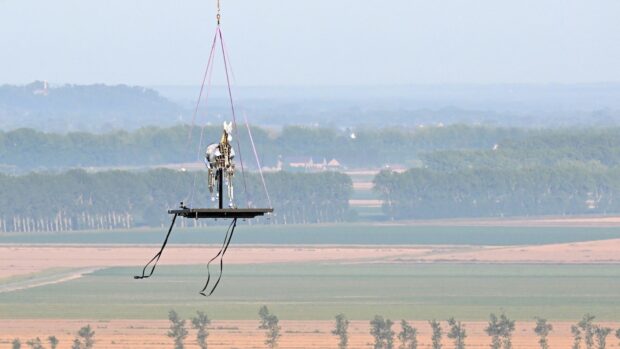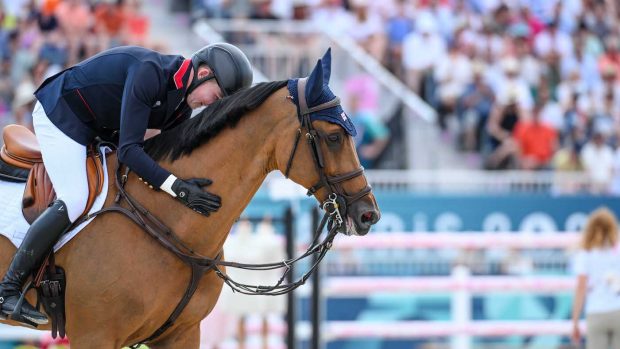What is showjumping?
Showjumping is one of three equestrian sports at the Olympic Games, the others being eventing and dressage. In showjumping, athletes ride a horse over a set of jumps in numerical order, scoring penalties (also known as “faults”) if they knock down any jumps or the horse refuses to go over a jump. The winner is generally the athlete with the lowest score in the fastest time. It is a test of a rider’s skill and a horse’s ability.
What are the rules?
The general rules for a showjumping competition are that each horse and rider jumps between 12 and 15 numbered obstacles, known as a “track” or a “course” which takes competitors in several changes of direction within an arena. Every athlete who jumps a clear round (finishing with zero penalties) then competes in round two which is essentially a race held over a shorter set of fences that are slightly bigger and it is referred to as the “jump-off”. The fastest horse and rider with the lowest score is the winner. However, there is a slightly different format to showjumping at the Olympics whereby showjumping athletes jump several rounds over a number of days before the winner is decided – by a jump-off if there is more than one athlete on the same score. Athletes are disqualified if they jump the wrong obstacle or the horse refuses to jump a fence more than once, or if the athlete falls off or both horse and rider fall on the ground.
How big are the jumps in showjumping?
A typical show jump is made up of specially designed “poles” held in place horizontally by a shallow ledge on a set of uprights known as “wings”. This means the top poles are very easy to knock down if a horse touches them with any part of their body. The biggest jumps in the Olympic showjumping event stand 1.65m high (approx 5 feet and 5 inches, which is more than the average height of a woman in the UK – it’s no mean feat to jump over something that high!) The world record, however, for a horse and rider jumping a fence stands at 2.47m (over 8 feet and 1 inch), set in 1949.
Why does every jump look different?
The obstacles in a showjumping competition can be verticals (poles layered one on top of another) or spreads, known as “oxers” or “triple bars” where two or three jumps are placed together and must be jumped in one go – not to be confused with “combinations”, which are two or three jumps placed a short distance apart where the horse must land and take one or two strides between each. There is often a wide water jump, which horses must clear in one leap. The bigger and wider the jumps are, the harder it is for the horse to jump them so those seen at the Olympics are considered the greatest challenges.
What speed are the horses going at?
The object of any showjumping competition is to cross the finish line within an allotted time, so the whole course must be jumped in a canter, one of a horse’s faster paces, but not quick as a racehorse, for example. Time-faults are added if competitors exceed the time allowed. Athletes will also be penalised if they veer off the course, so they need to make sure they’ve learnt the correct route as the horse has no idea where it’s going! There is also a technical element in that some jumps need to be approached on an angle rather than straight on and an athlete’s riding ability can be tested if two fences are separated by a distance that requires him or her to adjust the horse’s stride length to meet the jump at the ideal take off point.
Why do the athletes walk round in the arena before a showjumping competition?
Athletes are allowed to view all the jumps on foot before attempting to jump them on their horse – this is so they can memorise the route (the jumps must be jumped in numerical order). You may also see them counting their steps between the obstacles – this is so they know how many strides their horse will take and can ride accordingly.
Does the rider have to be good – doesn’t the horse do all the hard work?
The ability of the rider is absolutely crucial – you need a very good horse to reach Olympic level, but riding over these huge fences at speed requires immense skill from the rider. These athletes really are the best in the world and have to reach a high level to qualify for the Olympic Games.
Can athletes choose a different horse to ride?
No, once a competition has started, the athlete needs to remain on the same horse. Showjumping horses need to be brave, bold, powerful, have scope (ability to clear big jumps), athleticism, control and speed. Showjumping riders tend to have two or three “top” horses, who they will compete with for many years.
Why do horse riders wear those outfits in showjumping competitions?
Typical riding attire for a showjumping competition includes riding boots, white jodhpurs or breeches, a shirt and jacket with a riding helmet, all designed for protection and comfort. When athletes are representing their country such as at the Olympics, their jacket may reflect their nation’s flag, rather like a runner’s tracksuit. The horse always wears a saddle (where the athlete sits) and bridle (on the horse’s head – the reins are used by the rider to help steer and adjust the speed). You may also see a “saddle pad” beneath the saddle, which has a cushioning effect as well as often carrying the athlete’s national flag. You will also often see horses wearing coverings on their legs, which act like shin guards.
What is the history of showjumping?
An early form of showjumping became part of the Olympics in 1900 and shortly after the sport really started to take off in Great Britain. At this time many of the competitors were members of the military but this is no longer the case. The British Show Jumping Association (then BSJA, now referred to as BS) was formed in 1925 and is the national body for the sport in Great Britain.
Which countries are good at showjumping?
The reigning Olympic showjumping champion is Great Britain’s Ben Maher, who won gold in Tokyo on his top horse Explosion W. Sweden was crowned team gold medallists that year and they, along with countries such as USA, Belgium, Germany, Ireland, the Netherlands, Switzerland, Brazil and Great Britain, will be among the leading contenders for the showjumping at the Paris Olympics. A new team showjumping format introduced at the Tokyo Olympic Games means only three athletes will compete for each country and every score will be included in the team’s final tally (rather than the previous four athletes, with only the best three scores counting).
What is showjumping in the modern pentathlon?
The modern pentathlon is an Olympic sport that comprises five different events – fencing, freestyle swimming, showjumping and a cross-country run combined with pistol shooting. The showjumping element of the pentathlon may look fairly similar to the pure showjumping event but differs significantly in that the athletes are paired with horses in a draw before the start of the competition, rather than riding their own horses, and the jumps are significantly lower. Paris will be the last time that showjumping will be used as part of modern pentathlon at the Olympics. The phase is being replaced with an obstacle course at the 2028 Games.




